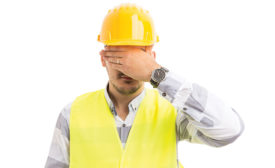Columns
Digital Edition Exclusive
Creating a workplace culture for employees facing mental health issues
Read More
NSC announces Amazon sponsorship to support women in safety
Funds will go toward helping women pursue safety careers and advancing those already in the field
November 4, 2019
Dig deeper into system factors behind at-risk actions
Discuss intentions,Not behaviors
November 2, 2019
How NOT to manage safety
Blame the victim, ignore standards, roll the dice
November 2, 2019
Never miss the latest news and trends driving the safety industry
eNewsletter | Website | eMagazine
JOIN TODAYCopyright ©2024. All Rights Reserved BNP Media.
Design, CMS, Hosting & Web Development :: ePublishing










